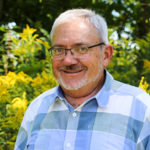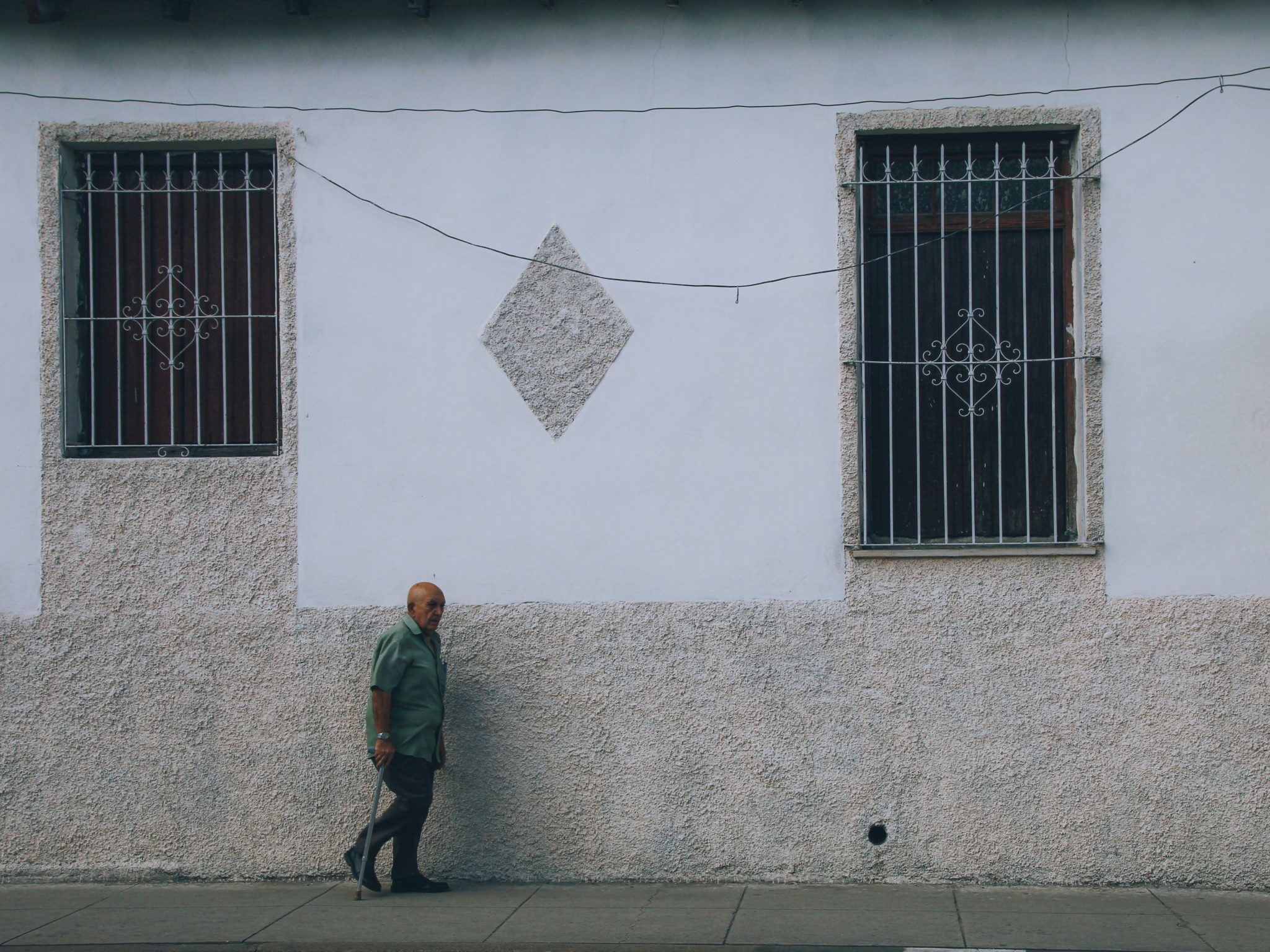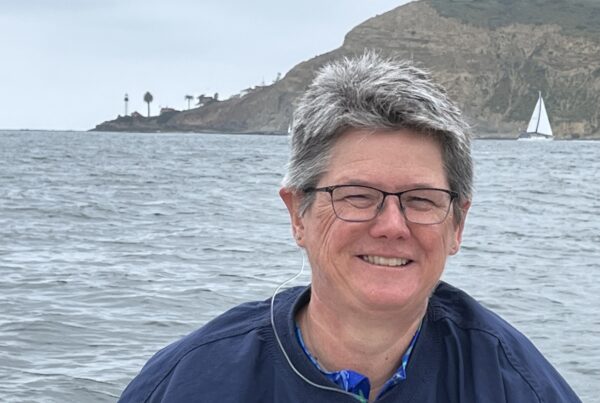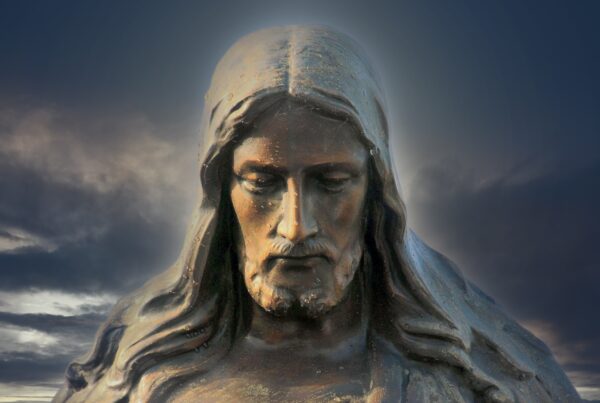C oming to terms with my disability has been a lifelong challenge—not only in the discrimination I face, but in how I feel about myself and what it means as a follower of Jesus who is seeking to live out my call in the church and beyond. This isn’t unique to disabled people; it’s shared by others in the church who get marginalized—whether it’s connected to their gender, skin color, ethnicity, orientation, or age. Slowly, the church is playing catch-up in these important issues of justice and equity, but we have a long way to go.
My experience with ableism in the church and beyond
My work with RCA Disability Concerns has forced me to wrestle in deeper ways with ableism—the subtle, pervasive bias evident in attitudes, actions, or hierarchal systems that perpetuate beliefs that a person with a disability is defective, broken, or “less than.” When I was hired in 2009 to launch this new ministry for the Reformed Church in America, it was the first time my disability felt like an asset. Initially, I resisted emphasizing the church’s many ableist practices because it seemed too difficult to start there. But as I’ve observed and repeatedly experienced ableist practices and systems over more than a decade, I’ve been convicted to name and challenge them.
“In heaven, there won’t be any disabilities,” I’m often told, both by people with and without disabilities.
Their perspective on heaven could be accurate, but I doubt it. Descriptions of the risen Christ still bearing the disabling marks of the crucifixion (John 20:19-31) are the most obvious counter to platitudes like this. Jesus’s own resurrected body demonstrates his solidarity with disabled people and tells me disabilities aren’t necessarily erased in heaven. As an RCA theological paper states: “Who knows whether, just as the resurrected body of Jesus still showed its wounds, our resurrected bodies will still bear the marks of our disabilities as well, not as limitations on our existence before God, but as the traces of divine grace, the signs of our deepest union with the Christ who shared our sufferings?”
Related: Disability theology touchpoints
I don’t say any of this lightly or in a mean-spirited way to dash the hopes of people whose disabilities have been painful or made their life (and their family’s life) incredibly difficult and challenging. With the apostle John, I believe that in the new heaven and new earth, “mourning and crying and pain will be no more” (Revelation 21:4).
But I’m also with those who’ve grown cynical hearing such sentiments of complete erasure and who feel beaten down and frustrated by a lifetime of ableist bias and systems. For them, “no disabilities in heaven” can come across as, “In heaven, we won’t have to put up with disabled people anymore.”
Addressing all of this is both delicate and daunting work, but increasingly it’s where I’m feeling called—in my current role within the church for sure, but also in public sectors beyond church walls.
Fresh insight into biblical texts and my own disability
Unfortunately, at face value, the Bible isn’t very helpful in showing us how to be non-ableist. Scripture primarily labels people by their disabilities and doesn’t provide their names (“the paralytic,” “the bent-over woman,” “a man born blind,” etc.). The lines between “curing” and “healing” are blurred. Sin and disability in the Bible are often conflated or named in such proximity as to imply cause and effect. Disability is presumed to result from sin and the fall, rather than being viewed as an aspect of diversity. References to mental health challenges are confused with demonic activity or a lack of faith. Disabled or “blemished” people were considered unfit for the Levitical priesthood.
Related: How Jesus Heals and Why It’s Different than a Cure
Without a critical or nuanced lens to interpret Scripture, the church tends to perpetuate and even sanctify ableist attitudes. Thankfully, scholarship has emerged in recent decades that sparks fresh insights into biblical texts and interpretation, and it’s transforming conversations and people in the church.
Personally, Amos Yong’s exploration of Jesus’s interaction with Zacchaeus (Luke 19:1-10) prompted me a decade ago to examine my own experience of being short in stature. Yong, a professor and theologian, invites readers to imagine this despised chief tax collector as a dwarf, which makes this familiar account become far richer than the popular Sunday school song. This approach to the text led me to investigate dwarfism more deeply.
My disability is apparent to anyone who sees me. Somewhat less obvious—except to those who know others in my birth family—is that my bone condition is part of the dwarfism family, and it makes me 12 inches shorter than my non-disabled brothers and father. At barely 5 feet tall, I might stand up to a foot taller than Zacchaeus, but neither of us would find it easy to climb a sycamore tree, reach into standard kitchen cupboards, or drive a typical automobile without attracting teasing gestures from others who wonder how we can see over the steering wheel and reach the gas pedal at the same time.
In what ways might thinking of Zacchaeus as a dwarf change our image of him as not only a despised person, but as an easy-to-mock public spectacle—his 4-foot frame waddling ahead of the crowd, straining to climb a sycamore tree, and then laboring to get down again after Jesus had singled him out?
As Yong points out, why have traditional interpretations of the Zacchaeus story made little of the possibility he was a dwarf? And what implications might this have for how the church traditionally has read any biblical story that features disability?
I regularly encourage people to read the Bible through a disability lens or ask people with disabilities how these stories come across to them. It’s one way to begin to challenge our own ableist approaches to reading Scripture.
For example, in her Instagram account @disabilitytheology, Michelle Eastman—who lives with Cerebral Palsy—draws refreshing insights out of Scripture by applying a disability lens. As summarized by disability advocates Jasmine Duckworth and Chantal Huinink in an article on ableism written for an issue of the theological journal Reformed World:
Eastman says Moses’ example of working with Aaron as his mouthpiece teaches us that “dependency on others is not a bad thing.” Although the text tells us God restored all that Job had lost, it does not mention any healing of his boils, so this could mean that “God does not always treat illness as something that needs fixing.” Jacob’s limp, in the wake of wrestling with God, shows us a leader with a visible disability. King David inviting Mephibosheth to eat at his table in the royal court shows us that “people with disabilities should be included at all levels of society.” Paul spread the gospel to most of the known world while simultaneously enduring a “thorn in the flesh,” illustrating the fact that while disability may be a part of someone’s identity, it does not define the whole person. Eastman concludes, “The stories of disabled biblical characters prove that disability is not a tragedy but part of the human experience that challenges the dominant norms of the first and second century and modern societies today.”
Such approaches have caused me to reexamine my own complex experience of identity and disability. Growing up in an ableist world and in uncritically ableist churches, I am working through my own internalized ableism. I am not defined by my disability, but it’s an essential aspect of who I am.
God clearly has worked through my disability over six decades to shape me, teach me, and give me access to significant, sometimes redemptive experiences—even when my disability has been a barrier. These experiences continue to forge who I am and have a way of drawing me into opportunities that call for more courage than I wish.
Read about and discuss ableism
As a next step toward ending ableism, read My Body Is Not a Prayer Request by Amy Kenny. Amy shares her experiences of ableism in the world and at church and suggests ways we can work together to undo ableism. Read the book and consider leading a book club at your church or with a circle of friends, neighbors, or co-workers.
Portions of this article are excerpted from “Cane and Able: A Retrospective Leading Me Somewhere” that appeared originally in the Reformed Journal.

Terry DeYoung
Terry A. DeYoung served as coordinator for disability concerns for the Reformed Church in America for 13 years before his retirement in 2023. His wife, Cindi Veldheer DeYoung, is a former hospital chaplain who lives with significant hearing loss. They live in Holland, Michigan, with their lively Brittany Spaniel, Dexter. Among other things, they enjoy traveling, boating, baseball, craft beer, and all things Chicago.



